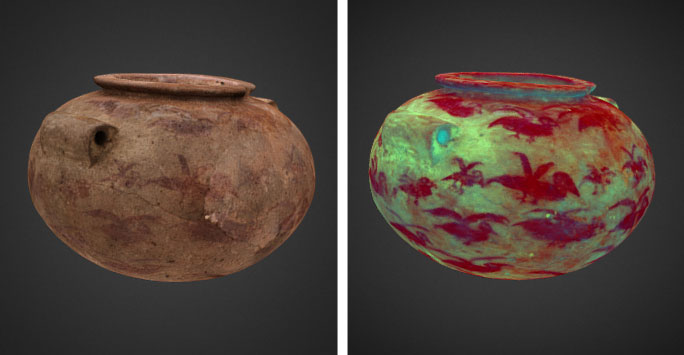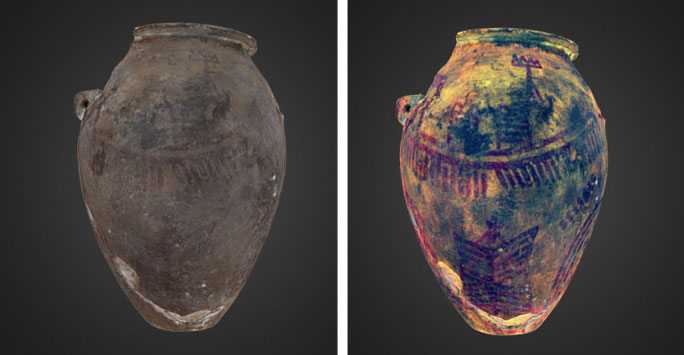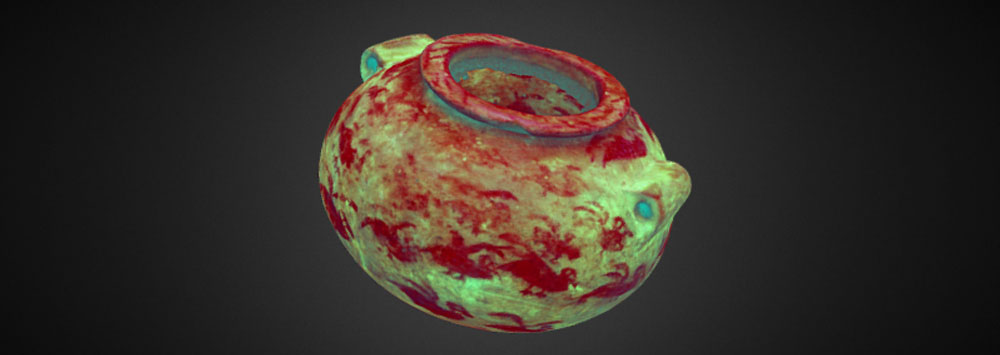Decorrelation stretch is one such image enhancement method by which the colour space of an image is ‘stretched’. As digital representations of colours can be described using numeric values for different colour channels (e.g. Red Green Blue values) it is possible to use statistical methods to transform these and make greater use of the colour space. What this effectively means is faded colours in an overall monotone image can be stretched to use a greater range of colours and thereby increase the colour contrast. This reveals patterns that were otherwise invisible.
Here the photogrammetry team has been applying these methods to objects in the Garstang collections. In particular this has included Ancient Egyptian objects such as decorated ceramic ware (also known as D-ware).
The examples we’ve examined have ranged from patterns faded due to weathering and ware, e.g. this pot (below) with a flock of birds - note patterns revealed on the rim.

The birds are clealy visible on the enhanced image to the right.
We have also worked with objects that have had large amounts of dirt deposited and obscuring the original patterns e.g. this pot below with boat scenes, original and enhanced.

Using this method, we can clearly see the original design.
We have build an efficient workflow for decorrelation stretch photogrammetry using the DStretch plugin. We will update this page with the paper (in review) upon publication, but contact us for details.
